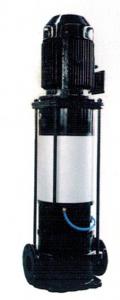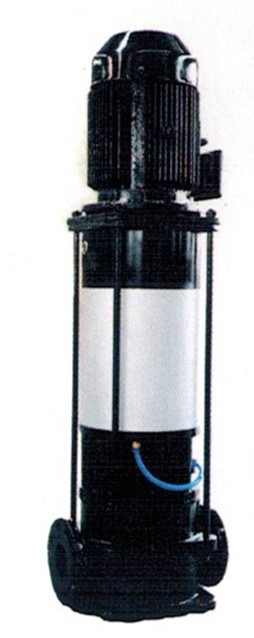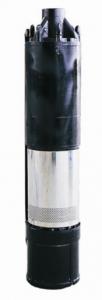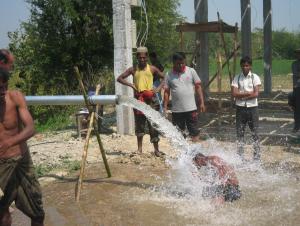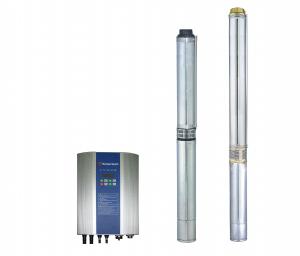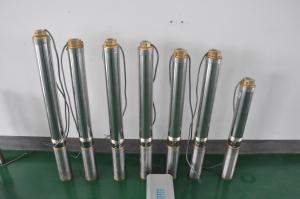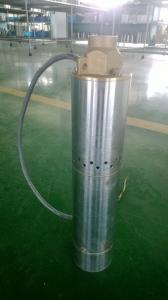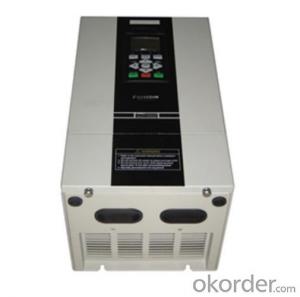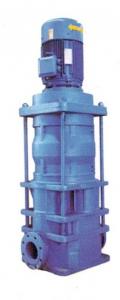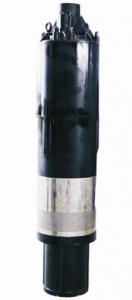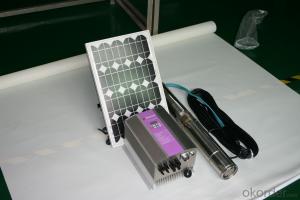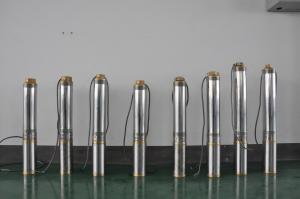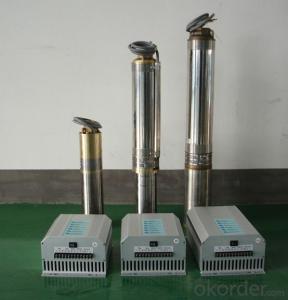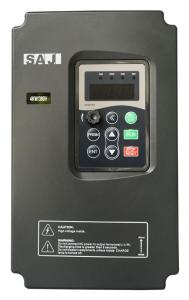Solar Pump Well L3D-10-180
- Loading Port:
- China Main Port
- Payment Terms:
- TT OR LC
- Min Order Qty:
- -
- Supply Capability:
- 300 sets /month
OKorder Service Pledge
OKorder Financial Service
You Might Also Like
Product description:
Product: Solar water pump
Model:L3D-10-180
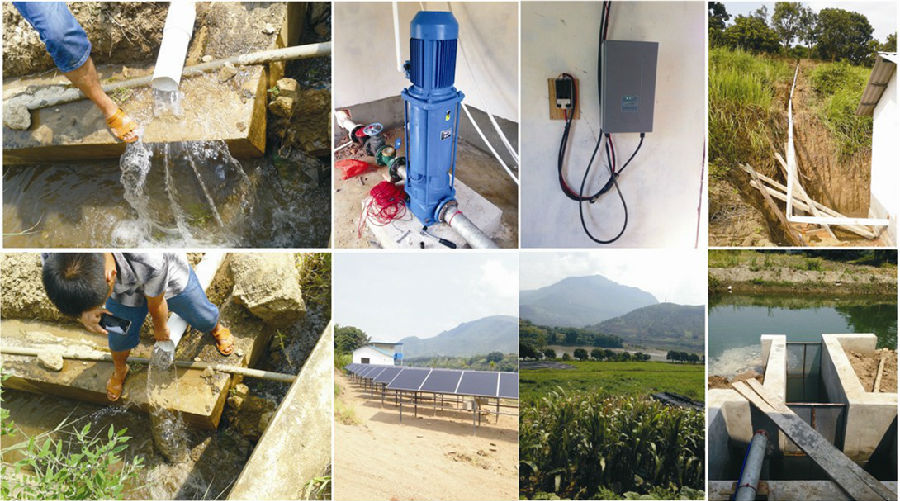
Appilication:
surface pump
for surface water of pond, river, lake
for irrigation of a big farm with 6000 m2 on the top of a small mountain
Product specification:
flow rate:10m3/ hour, 80m3/day.
lift: 10m-180m
pump diameter: 296mm
Pump installed on the ground, outlet to the water surface:4m
with AC motor, motor power:5.5kW
but only need solar power:3.2kW(while Grundfos pump needs at least 11.5kW solar power, our pump can save more than 50% solar panel power,save USD3600 cost for solar panel per set.
Material:
Pump inside: stainless steel and wearable nylon,it enables our solar pump to have 10 years sevice life.
Motor : AC motor, 380V , three phase , 50Hz. The pump also can connect with grid power directly.
Certification:
3 International patent
ISO9001
CE
Warranty:2 years
- Q: Can a solar pump be used for fountains?
- Yes, a solar pump can definitely be used for fountains. Solar pumps are designed to function using solar energy, converting sunlight into electrical power that can be used to run the pump. This makes them a great option for fountains, as they eliminate the need for traditional electrical power sources. Solar pumps are typically easy to install and maintain, and they can provide a sustainable and environmentally friendly solution for powering fountains. They can be used in both small and large fountains, and are often a popular choice for garden or backyard fountains.
- Q: Are there any noise or vibration concerns with a solar pump?
- No, there are generally no noise or vibration concerns with a solar pump. Solar pumps are known for their quiet operation due to the absence of any mechanical or moving parts, resulting in minimal noise and vibration.
- Q: Can a solar pump be used for fish farming or aquaculture?
- Yes, a solar pump can be used for fish farming or aquaculture. Solar pumps are an environmentally friendly and cost-effective option for providing aeration, circulation, and water flow in fish ponds or aquaculture systems. They can help maintain optimal oxygen levels and water quality, which are crucial for the health and growth of fish. Additionally, solar pumps eliminate the need for electricity or fuel, making them a sustainable choice for fish farmers.
- Q: Can a solar pump be used for water supply in military camps or bases?
- Yes, a solar pump can definitely be used for water supply in military camps or bases. Solar pumps are reliable and efficient, utilizing solar energy to power water pumping systems. They can be easily deployed in remote locations, providing a sustainable and cost-effective solution for water supply in military operations. Additionally, solar pumps require minimal maintenance and have a long lifespan, making them suitable for the demanding conditions of military camps or bases.
- Q: Can solar pumps be used for water supply in remote islands or coastal areas?
- Yes, solar pumps can be used for water supply in remote islands or coastal areas. Solar pumps are an ideal solution for such areas where access to electricity or traditional water supply systems may be limited. They can effectively harness solar energy to pump and provide a reliable water supply, making them a sustainable and cost-effective option for remote locations.
- Q: Are there any limitations to the distance a solar pump can pump water?
- Yes, there are limitations to the distance a solar pump can pump water. The main limitation is the power output of the solar panel, as it determines the pump's capacity and efficiency. Factors such as the height or elevation the water needs to be lifted, the length and diameter of the pipes, and the flow rate required also impact the pump's ability to transport water over longer distances.
- Q: Can a solar pump be used in sewage treatment plants?
- Yes, a solar pump can be used in sewage treatment plants. Solar pumps are commonly used in various types of water treatment systems, including sewage treatment plants. They offer a sustainable and environmentally friendly solution by harnessing solar energy to power the pumps, reducing reliance on fossil fuels and electricity from the grid. Solar pumps can effectively transfer and circulate sewage throughout the treatment process, contributing to the overall efficiency and cost-effectiveness of sewage treatment plants.
- Q: Can a solar pump be used in areas with high humidity?
- Yes, a solar pump can be used in areas with high humidity. The high humidity levels do not affect the functionality or efficiency of the solar pump.
- Q: Can solar pumps be used for fish ponds or aquaculture?
- Yes, solar pumps can be used for fish ponds or aquaculture. Solar pumps offer a sustainable and cost-effective solution for powering water circulation, aeration, and filtration systems in fish ponds. They can help maintain water quality, oxygen levels, and create a conducive environment for the growth and well-being of aquatic life. Additionally, using solar pumps reduces dependence on fossil fuels and lowers operational costs in fish farming or aquaculture setups.
- Q: Can solar pumps be integrated with existing generator or battery backup systems?
- Yes, solar pumps can be integrated with existing generator or battery backup systems. By combining solar power with existing backup systems, it ensures a reliable and continuous water supply even during periods of low sunlight or power outage. This integrated approach provides a sustainable solution that maximizes the efficiency and reliability of water pumping systems.
Send your message to us
Solar Pump Well L3D-10-180
- Loading Port:
- China Main Port
- Payment Terms:
- TT OR LC
- Min Order Qty:
- -
- Supply Capability:
- 300 sets /month
OKorder Service Pledge
OKorder Financial Service
Similar products
Hot products
Hot Searches
Related keywords
